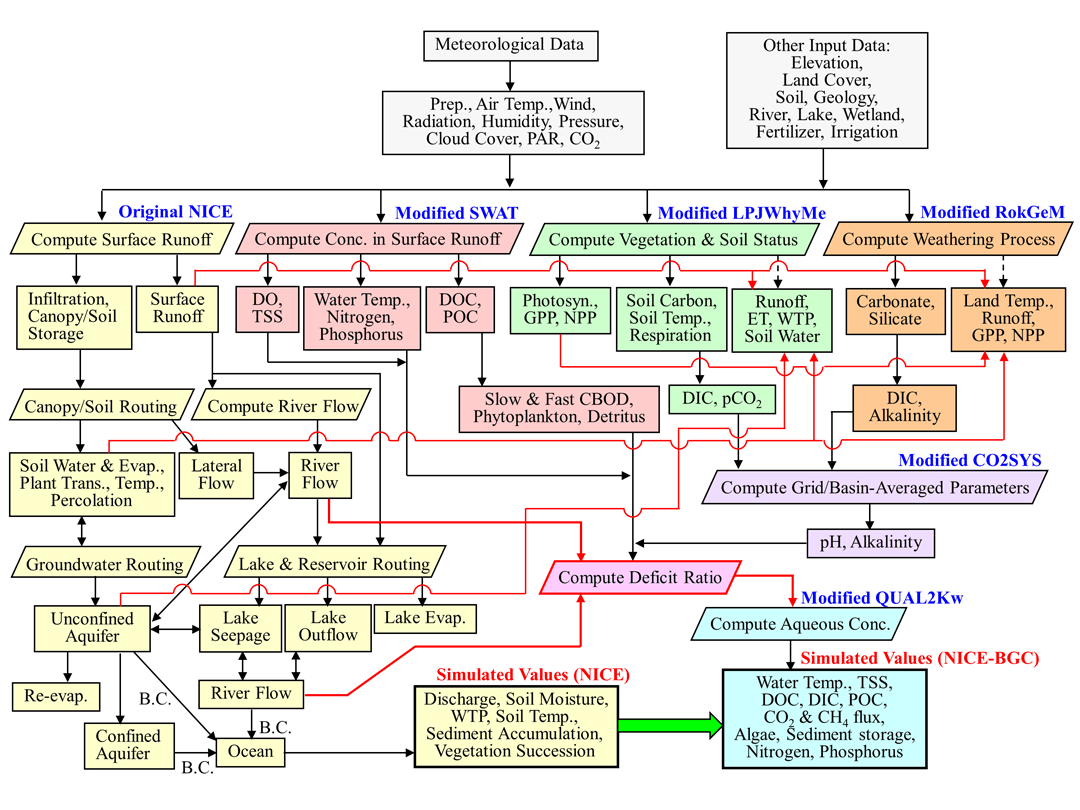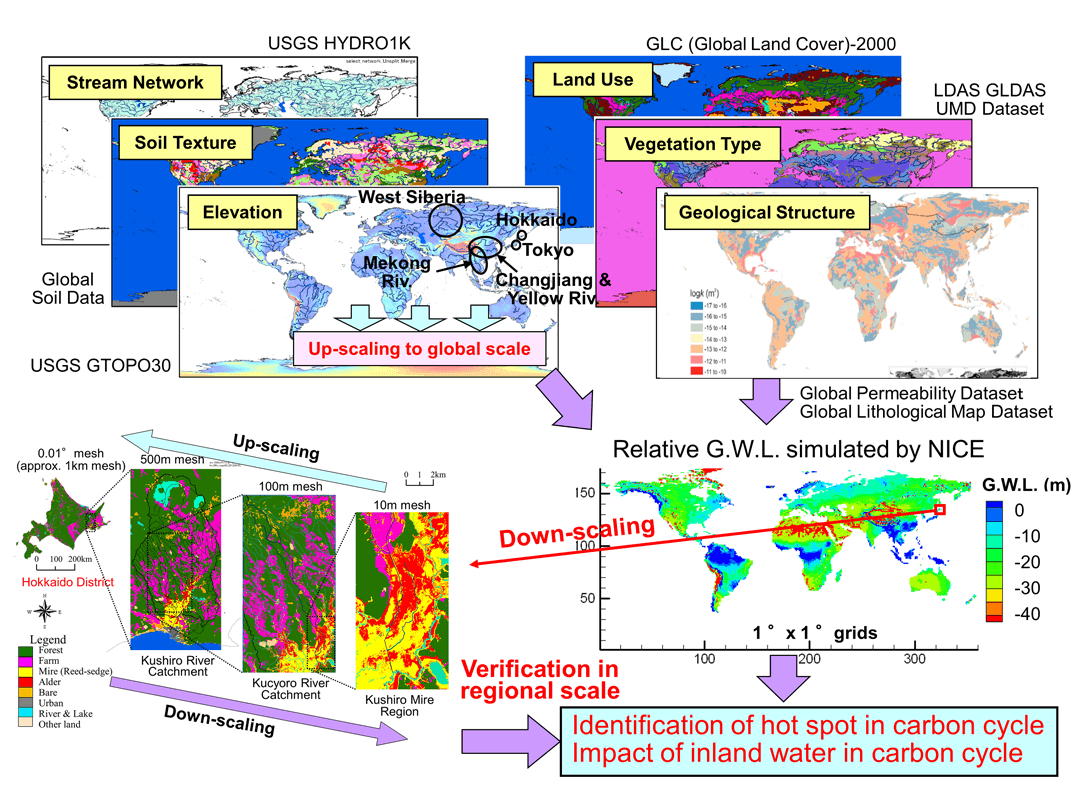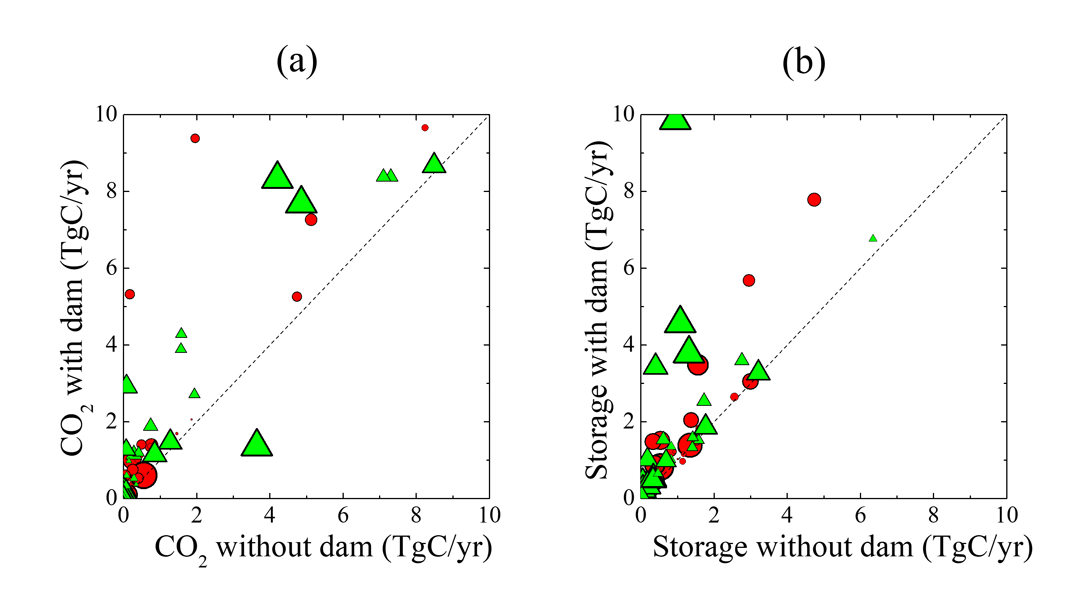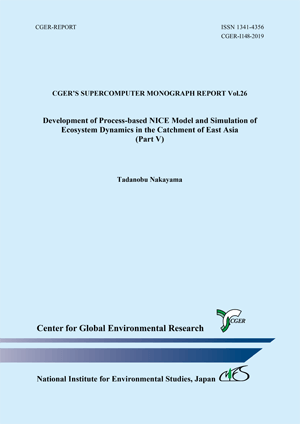NAKAYAMA T.
CGER Reports
CGER’s Supercomputer Monograph Report Vol. 26
This monograph (Part V, CGER-I148-2019) succeeds a series of the author’s previous reports: Vol. 11 (Part I, CGER-I063-2006), Vol. 14 (Part II, CGER-I083-2008), Vol. 18 (Part III, CGER-I103-2012), and Vol. 20 (Part IV, CGER-I114-2014) published before.
The National Integrated Catchment-based Eco-hydrology (NICE) is a 3-D, grid-based eco-hydrology model, and includes complex subsystems in natural vegetation, irrigation, urban water usage, stream junctions, and dams/canals, to develop integrated human and natural systems and to analyze the impact of anthropogenic activity on eco-hydrologic change.
In the current monograph (Part V), the author reviews a new development of process-based NICE-BGC by an extension of the original NICE coupling with various biogeochemical cycle models (Fig. 1). This new model also extends to evaluate water and carbon cycles in the global and continental scales beyond East Asia in the author’s previous monographs (Part I to IV) (Fig. 2). NICE-BGC includes mechanisms of transport, mineralization, and sequestration of carbon in terrestrial–aquatic linkages, the interplay between inorganic and organic carbon and its relationship to nutrients (e.g., nitrogen and phosphorus), and the effect of hydraulic control structure such as dam on biogeochemical cycle changes.


The author introduces some results on global water and carbon flux budgets in inland water (Fig. 3), seasonal variations of global carbon flux (Fig. 4), and changes in vertical flux with the presence of reservoirs (Fig. 5). These results quantify the horizontal and vertical carbon fluxes in terrestrial–aquatic linkages, and also imply the necessity to revise existing studies mainly concentrated on the vertical carbon flux and reaction in terrestrial ecosystem.



The evaluation of terrestrial-aquatic linkages and aquatic metabolism in this monograph is also important for the improvement in the quantification of greenhouse gas fluxes such as CO2, CH4, and N2O and biogeochemical cycle, which NICE-BGC is now analyzing in more details. Currently, NICE-BGC is also developing to couple with an ocean carbon cycle model to evaluate the land-ocean interaction in global estuaries. The author hopes to report these evaluations currently being underway in a following monograph (Part VI) in the near future. These approaches will not only aid an evaluation of the complex processes involved from the view point of hydrologic and biogeochemical cycles, but will also clarify how the substantial pressures caused by water resource imbalance can be overcome by effective trans-boundary solutions.


 PDF, 10.6 MB
PDF, 10.6 MB